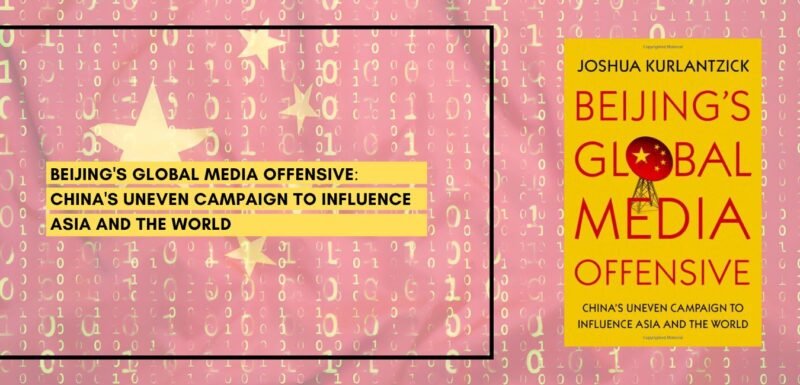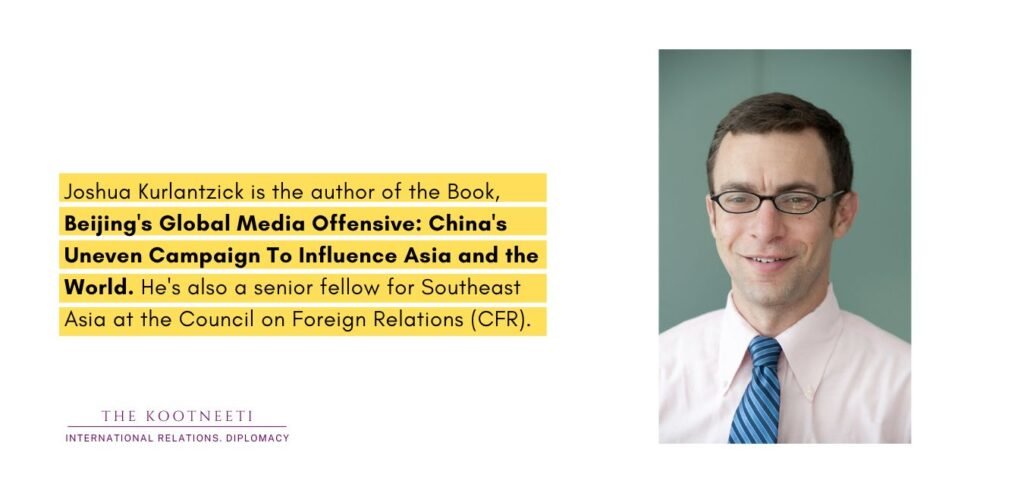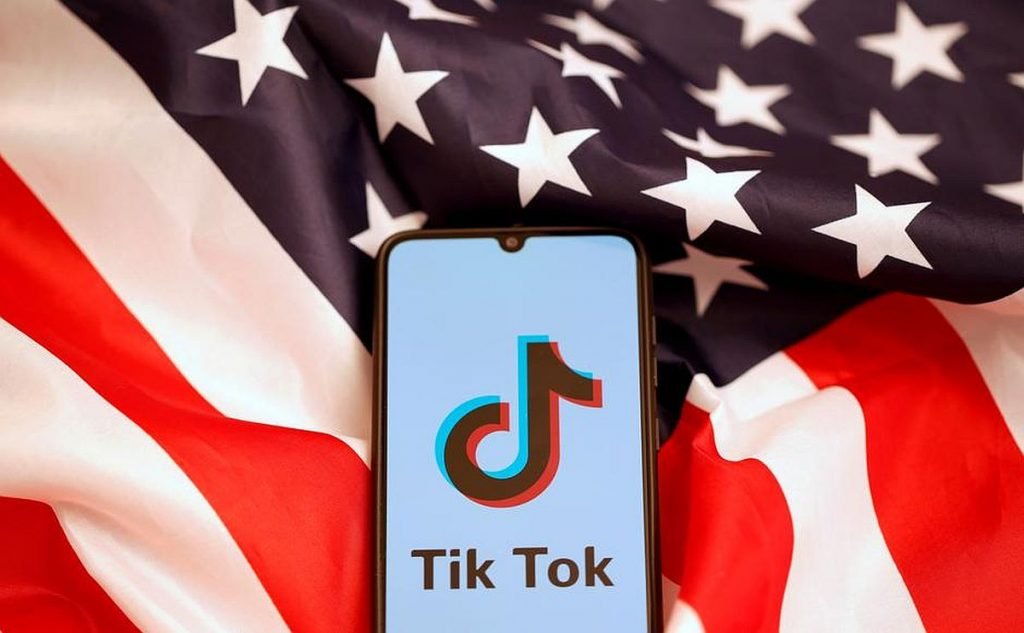Beijing’s Global Media Offensive: Book Review and Author Interview

China has been investing heavily in building its global media presence, particularly through state-backed media outlets such as Xinhua, China Daily, and China Global Television Network, or CGTN. These media outlets are no longer just promoting Chinese government policies and events but have expanded to cover a wide range of topics and issues, from technology and culture to global news and opinion pieces. They have also developed digital capabilities, creating multimedia platforms and mobile apps to reach a wider audience.
Moreover, China has been using various means to influence local media and politics in other countries. One tactic is through having pro-China business people in countries invest in local Chinese language media outlets or by having state newswire Xinhua signing content-sharing deals with local language outlets, giving China a voice in local news coverage. Another tactic is through expanding China’s social media giants WeChat into other regions, and these can be used to disseminate Chinese propaganda and censor critical voices. China has also been investing in wired and wireless technology that underpins information flows, such as 5G networks and undersea cables.
Despite these efforts, China has faced significant challenges in winning hearts and minds around the world. Its assertive and sometimes aggressive diplomacy has often backfired, leading to a backlash against China’s policies and harming its image in many states. Additionally, many people in other countries are skeptical of China’s media and distrustful of its intentions, particularly given China’s domestic human rights record and its history of suppressing dissent at home.
Nonetheless, China’s media and political influence campaigns are likely to continue and adapt to changing circumstances in other countries. This could have negative consequences for press freedoms, human rights, and democracy in other countries as China seeks to export its authoritarian political model and protect the ruling Communist Party’s grip on power at home.
In his book, “Beijing’s Global Media Offensive: China’s Uneven Campaign to Influence Asia and the World,” Council on Foreign Relations senior fellow Joshua Kurlantzick examines how China is attempting to build a media and information superpower. He also highlights China’s media and information failures and the negative consequences of China’s aggressive and often alienating diplomacy. Despite these setbacks, China’s media and political influence campaignslikely will continue to expand and potentially damage press freedoms, human rights, and democracy abroad.
The Kootneeti interviewed Kurlantzick, author of the book “Beijing’s Global Media Offensive: China’s Uneven Campaign to Influence Asia and the World,” discussing a wide range of topics related to China’s media power and influence campaigns around the world. Kurlantzick discussed the motivation behind his book and the challenges he encountered while writing about China’s efforts to exert influence in other countries through state media outlets, social media platforms, funding of foreign politicians, and covert operations in education and ethnic Chinese communities. He also spoke about the United Front Work Department (UFWD), a Chinese intelligence organization that, in part of its work, targets discourse on university campuses and ethnic Chinese student groups, and how it has evolved into a global operation for the Chinese Communist Party (CCP). Kurlantzick elaborated on China’s soft power toolkit and its impact on spreading propaganda, including the role of social media platforms like WeChat. He also discussed how liberal democratic societies could counter China’s influence and the future of China’s media offensive in an era of AI and advanced technologies like ChatGPT. Here are the excerpts:

Question: What motivated you to write a book on China’s global media offensive and what were the top challenges he encountered while writing about China’s efforts to exert influence in other countries through its state media outlets, social media platforms, funding of foreign politicians, and covert operations in education and ethnic Chinese communities?
Answer: I wrote a book that came out in 2007 called Charm Offensive. That book chronicled China’s soft power efforts in Asia and other parts of the world, and at that time Beijing was fairly successful in some of its soft power efforts, including via media, cultural diplomacy, and many other types of soft power. At that time, too, China was nowhere near as powerful strategically as it is now, and nowhere near as aggressive militarily (and economically) as it is now. I wanted to revisit China’s efforts to wield influence inside other countries again, but this time with China as the world’s second most powerful state – and thus a situation that makes it much harder for Beijing to wield soft power in some ways. In fact, that is why Beijing has increasingly turned to sharper, more concealed types of power. Some of the major challenges I encountered were getting people from Chinese state media outlets to talk to me, though I did find some who were willing, getting a real read on the extent of Chinese influence over politicians and education in other countries, since some analyses overstate China’s efforts and I find them often to be not as effective as they seem at first, and finding that, after doing my research, I actually concluded China was having only mixed success in its influence campaigns – and actually turning much of the world against it.
Question: In your book, you mentioned the United Front Work Department, an organization that historically dealt with the Chinese diaspora but has evolved into a much larger intelligence operation. It often targets discourse on university campuses and ethnic Chinese student groups. Before asking about the UFWD, I wanted to ask, how important are Chinese intelligence operations within China’s own diaspora. Why it is so important to keep an eye on ethnic Chinese in other countries?
Answer: The diaspora is absolutely critical to China’s foreign influence efforts. Beijing has always (wrongly) assumed that ethnic Chinese in any country, regardless of their citizenship or views, are somehow destined to be loyal to Beijing – even though many Chinese living abroad are actually the opposite, they may have fled China, and may be strong opponents of the CCP. But targeting the diaspora has always been a key part of Chinese influence efforts and Xi Jinping has made the UFWD more powerful during his tenure, and Beijing has expanded its diaspora efforts, as China itself becomes more powerful, to include extensively trying to sway the diaspora on university campuses, among business groups, and among Chinese associations in places like Southeast Asia, the U.S, Australia, and other places. The goal in part is to encourage self-censorship in diaspora groups about China’s problems, and to encourage pro-Beijing sentiment. In some places, too, wooing diaspora groups allows Beijing to play a bigger role potentially in politics in those countries and in the countries’ education systems.

Question: Those who are unaware of Beijing’s ways of operating may not know about the United Front Work Department UFWD’s way of operating. What is the United Front Work Department (UFWD) and how has it evolved into a global intelligence operation for the Chinese Communist Party (CCP)? Can you provide a few examples of its role in influencing ethnic Chinese communities and foreign governments, as well as its impact on education and electoral politics in different countries?
Answer: It has expanded in size significantly under Xi Jinping, although it has been around for a long time – he has given it broader powers and functions beyond its more limited efforts with diaspora communities in the past. The UFWD is widely believed to play a role in assisting/funding Chinese student associations on university campuses in many countries, for instance, and in this way, it helps influence discourse about China on campuses among ethnic Chinese students – and potentially scare people who are critical of China into not criticizing China. There has been pushback though against this – and in countries like the U.S. and India there is now great scrutiny of the UFWD, as well as of the CCP’s interference in university education. That is why many liberal democracies have closed or are closing Confucius Institutes, which were supposed to be language and cultural centers set up at universities but have sometimes played a role in fostering self-censorship on campuses about China. The UFWD also allegedly has played a role in targeting Australian and New Zealand and Taiwanese politics, among other places, although again there has been a backlash – tough foreign interference laws in Australia for instance, laws that may be copied by many other liberal democracies. So in some ways many of China’s influence efforts are backfiring against it.
Question: In your book, you write at one point about a soft power toolkit, and at another point, you write about China’s state media attempting to copy the styles of Russian outlets Sputnik and RT. Can you elaborate on this? Is there any particular kind of Chinese state media evolving? And do you think Chinese state media may take another form in the world after the Ukraine war or in the future in the case of a possible conflict in the Taiwan strait?
Answer: Actually, what I think I said was that Beijing wanted ideally to make its state media more like Al Jazeera, rather than Sputnik or RT – outlets based in authoritarian countries but (in the case of Al Jazeera) relatively respected for their coverage of most issues, albeit not independent in coverage of Qatar or issues related to Qatar, where Al Jazeera is based. I don’t think Chinese state media could be like Sputnik and RT, which, before the Ukraine war, when they operated relatively freely in most countries, were actually given a decent degree of latitude in what they published and ran on TV, albeit much of it designed to create conspiracies and to demonize democracy. I don’t think Beijing could ever allow its state media that level of freedom and freewheelingness that Sputnik and RT had, so I think that wasn’t really a viable option. And it turned out that Al Jazeera couldn’t be a viable model either, even though for a time China hired a lot of quality local journalists in many countries. But most of those people have quit as China has become more authoritarian under Xi Jinping, and the idea to be like Al Jazeera failed since Chinese state media outlets just couldn’t produce independent reporting about almost anything and have little audience anywhere, other than Xinhua, which is indeed building an audience. I don’t think Chinese state media other than Xinhua has the capacity to evolve, and the Ukraine war is only making it harder for Chinese state media.
Question: There have been various claims and reports suggesting that China could be using TikTok for intelligence-gathering purposes. What is the role of social media in spreading Chinese propaganda and how effective is the spread of Chinese soft and sharp power through platforms like TikTok in terms of impact?
Answer: There are some reports of this; the bigger concern is that TikTok data flows through servers in China, which is a reason why India has banned TikTok and there are calls in the U.S. and other countries to ban it too. I think ultimately some solution will be worked out in which TikTok users’ data is kept on servers within the countries where they are located. TikTok is not yet a major factor in spreading propaganda but given its popularity it obviously could be highly worrisome. More often propaganda is spread via disinformation on other social media platforms like Twitter, Facebook, and others, and these outlets have not been great about their content moderation – particularly not Twitter in recent months. China is becoming more skilled at using these platforms for disinformation and propaganda.

Question: How do you see liberal democracies countering this Chinese information impact? Also, in this era of AI and tools like ChatGPT where does the Chinese media offensive fit into the spread of AI and chatbots?
Answer: I’m not sure how AI and ChatGPT play in – they could play a role, but they would have to be used by China – China’s own AI or version of ChatGPT – to spread propaganda and one of the aspects of something like ChatGPT is it is a tool that continually learns and amasses information and tries to provide “accurate” answers so I’m not sure how such a tool could necessarily be programmed to spread propaganda – though, granted, I am far from an expert on ChatGPT, and China’s AI now is lagging that of the United States and other countries, because China’ authoritarianism is driving away its most talented innovators. Democracies, including India, can combat China’s influence efforts. That can be done by strengthening democracy, by applying stricter scrutiny to foreign interference efforts in politics and media, by learning more about how China uses social media platforms, by strengthening content moderation on social media platforms while also dealing with the issue of TikTok and where users’ data is stored, by pushing back against Chinese economic coercion and other types of coercion, by funding and supporting independent media in Chinese in particular, and by using many other tools.


















